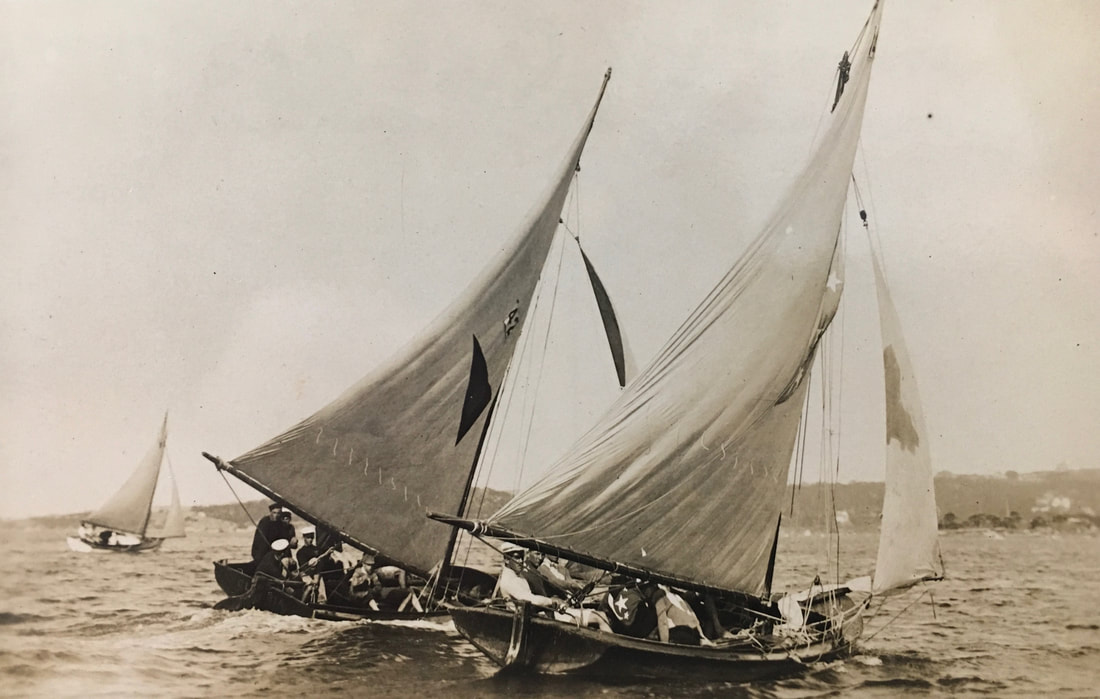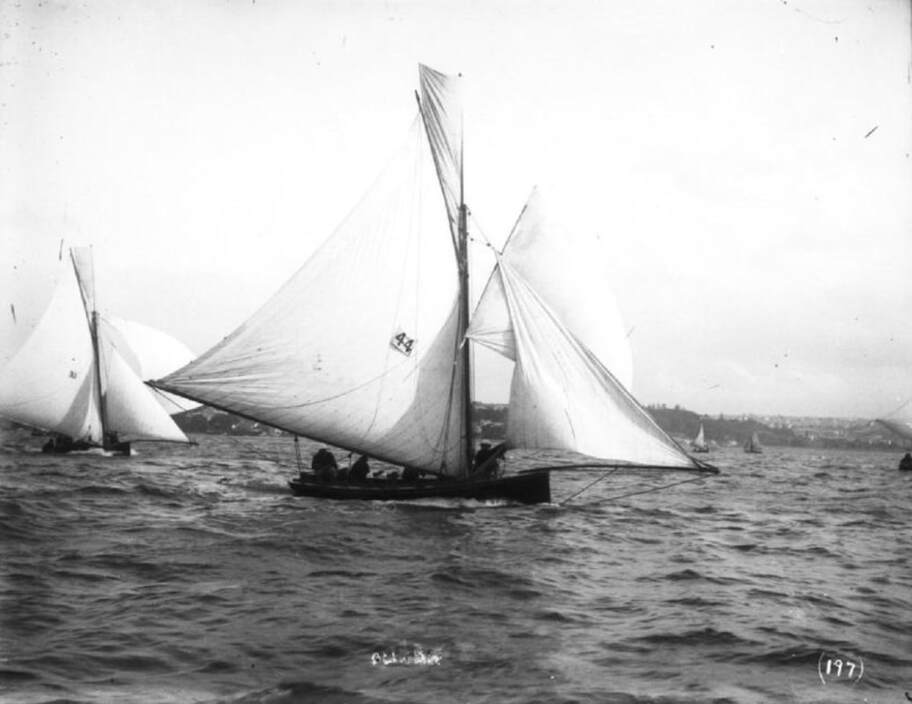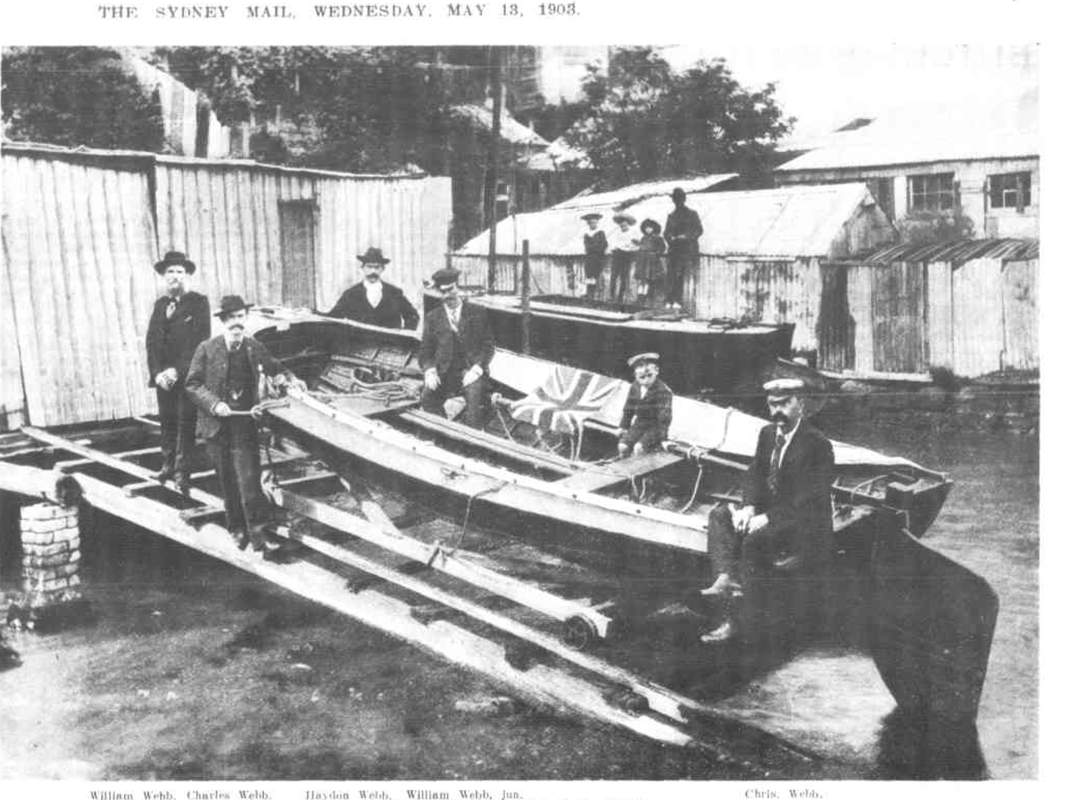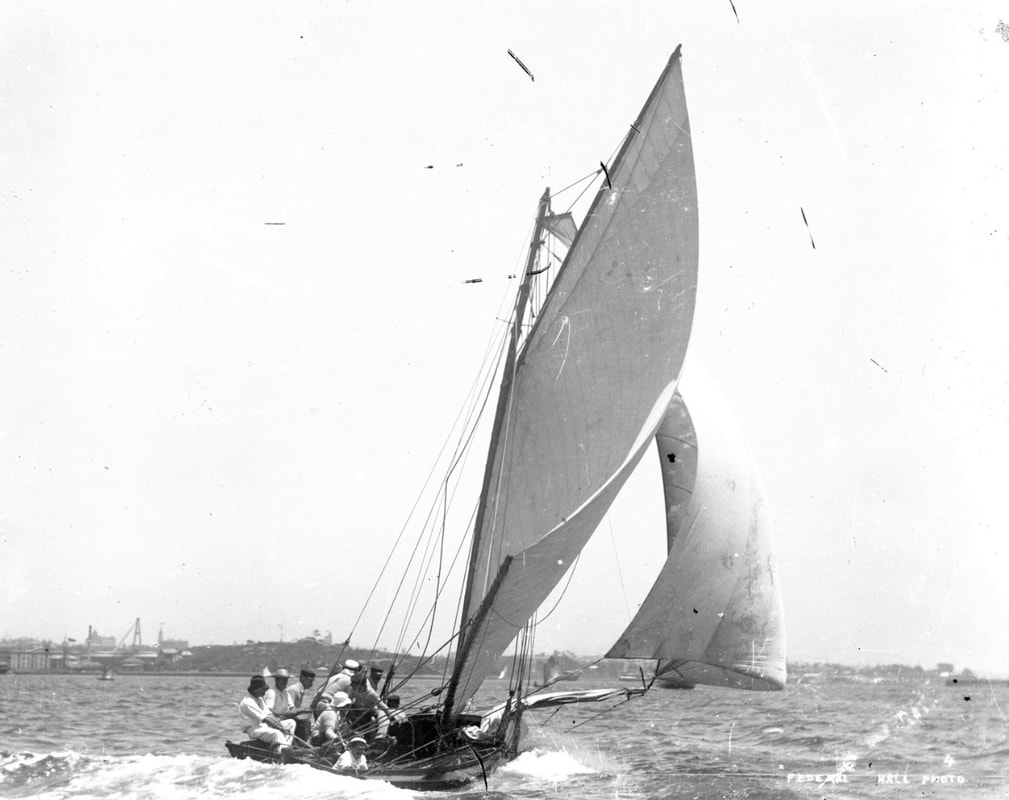Two of the earliest recognisable 18-footers, Aztec on the right, with an as yet unidentified boat on the left. This is between 1892 and 1895. Hall collection ANMM.
The whole story has been told in my book The Open Boat: The Origin, Evolution and Construction of the Australian 18-Footer, but here’s a short version of the story of the earliest 18-footers.
The first mention of 18-footers in newspaper reports come from the late 1880’s, but these boats were narrow, shallow skiffs that sometimes raced with similar 19-foot skiffs that were a popular class in the 1870’s and 1890’s. The first boat that we would probably recognise as an 18-footer was likely to be Gymea built by Billy Golding in 1889. We have no photos or descriptions of the boat other than references to it from the 1890’s as being one of the first of the class. The boat raced in general handicaps with the larger classes of 20-footers, 22-footers and 24-footers.
In 1891 amateur builder A. Pontey built Cygnet and began to enter in regattas and races with the Johnstones Bay Sailing Club and mostly engaged the legendary skipper Tom Colebrook to steer, so he was serious about winning races. She often raced against Gymea and several other new boats, Edith, Ivy and O.K. The next year Aztec (pictured above and also listed on the 18-FOOTERS Page) and HS Lincoln joined the fleet, but they were still mostly racing in general handicaps, but from 1892 the Balmain Regatta held a race for 18-footers, and the Anniversary Regatta followed suit from 1894. Four new boats appeared in 1893 and five in 1894.
The first mention of 18-footers in newspaper reports come from the late 1880’s, but these boats were narrow, shallow skiffs that sometimes raced with similar 19-foot skiffs that were a popular class in the 1870’s and 1890’s. The first boat that we would probably recognise as an 18-footer was likely to be Gymea built by Billy Golding in 1889. We have no photos or descriptions of the boat other than references to it from the 1890’s as being one of the first of the class. The boat raced in general handicaps with the larger classes of 20-footers, 22-footers and 24-footers.
In 1891 amateur builder A. Pontey built Cygnet and began to enter in regattas and races with the Johnstones Bay Sailing Club and mostly engaged the legendary skipper Tom Colebrook to steer, so he was serious about winning races. She often raced against Gymea and several other new boats, Edith, Ivy and O.K. The next year Aztec (pictured above and also listed on the 18-FOOTERS Page) and HS Lincoln joined the fleet, but they were still mostly racing in general handicaps, but from 1892 the Balmain Regatta held a race for 18-footers, and the Anniversary Regatta followed suit from 1894. Four new boats appeared in 1893 and five in 1894.
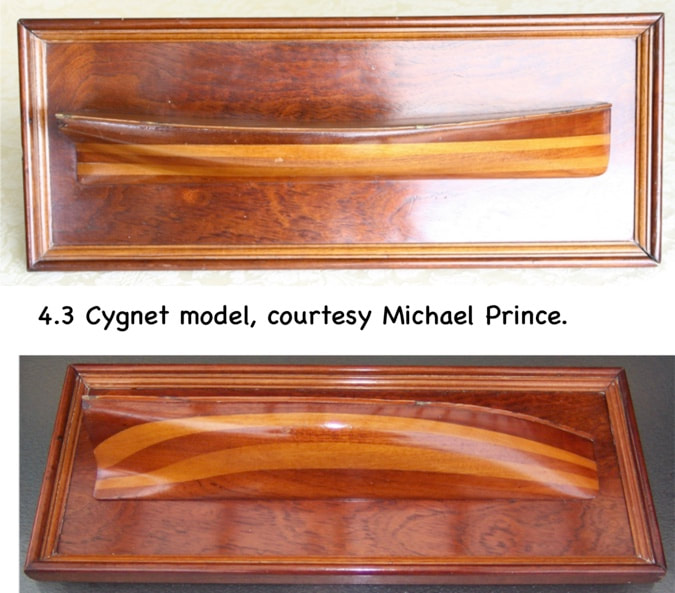
This is the original builder’s model of the Cygnet, still in the possession of descendants of A. Pontey. Note the straight keel. A lines plan taken off this model is in The Open Boat book, p42.
As far as we can tell, these boats were mostly relatively narrow, Cygnet at 6’5 1/2” beam across the planking. Aztec (Hubbard 1892) was described as “not beamy” and “just a skiff”. Ariel (Joe Donnelly 1894) was 6’6” beam (see photo and discussion in Selected Images ) and Stella (Edgar Dearing 1895) was 7’2”.
But the bigger classes of 20’s, 22’s and 24’s had been getting beamier and beamier since 1889 and from 1895 the new 18-footers began to follow suit. Golding’s Yvonne of 1895 was 8’ as was Sam Williams’ Australian of 1896. Two new design features began to appear in the early1890’s, sprung keels and hollow garboards (see The Open Boat book p26 and 38).
But the bigger classes of 20’s, 22’s and 24’s had been getting beamier and beamier since 1889 and from 1895 the new 18-footers began to follow suit. Golding’s Yvonne of 1895 was 8’ as was Sam Williams’ Australian of 1896. Two new design features began to appear in the early1890’s, sprung keels and hollow garboards (see The Open Boat book p26 and 38).
The early 18’s carried all of the sails the larger open boats did, including squares’ls and ringtails. This is Golding’s Olinda of 1893. Hall collection, ANMM.

Golding’s 8-foot beam Yvonne of 1895. Hall collection ANMM.
By 1898 another eight boats had joined the fleet and were even beamier, with Goulding’s Federal, Dearing’s Kyeewa and Donnelly’s eponymous Donnelly all at 8’4”. They still mostly raced in general handicaps with the JBSC and the new Sydney Flying Squadron but both of these clubs held 18’ Championships and occasional other 18-footer-only races from 1895. Leading skippers were generally engaged in most events, but the chief interest from the skippers and the public was the 22-footers.
The legendary Australian (Sam Williams 1896) crewed by the even more legendary Chris Webb and his brothers. The general arrangement of the interior of the hulls changed only little until around 1950.
“The Intercolonial Challenges of the 1890’s” on the YARNS Page tells the story of how the 22-footers were dominant up until the turn of the century, and why they fell out of favour leading to the 18’s becoming the dominant class by 1902. But it didn’t happen suddenly, in fact there was a lull in 18-footer activity around 1900. The story is told in the YARN “Horses for Courses: Open Boats and Raters” which describes how there were only two 18-footers racing with the SFS in the 1900-01 season and the new raters nearly took over. But the spectators didn’t want to watch the boring raters, and the 22-footers were racing less and less without the impetus of interstate competition, so the attention and the money began to follow the 18’s. In 1902 the prize money offered to the 18-footers at regattas was greater than that offered to the 22-footers for the first time. I can find no record of a racing 22-footer built after 1900, but there were fifteen 18-footers built between 1901 and 1904, then nine in 1905 and twelve in 1906 alone, almost exclusively big-beamers. Small design changes led to small increments of speed, but Donnelly and Federal both built in 1898 remained competitive until 1920, and the newer boats built in the early 20th century were generally similar to those boats in hull shape, arrangement and rig until the arrival of Aberdare in 1932.
Golding’s Federal (1898) was 8’4” beam across the planking and was typical of the boats that numerically dominated the fleet from 1895 to 1932. Hall collection ANMM.
